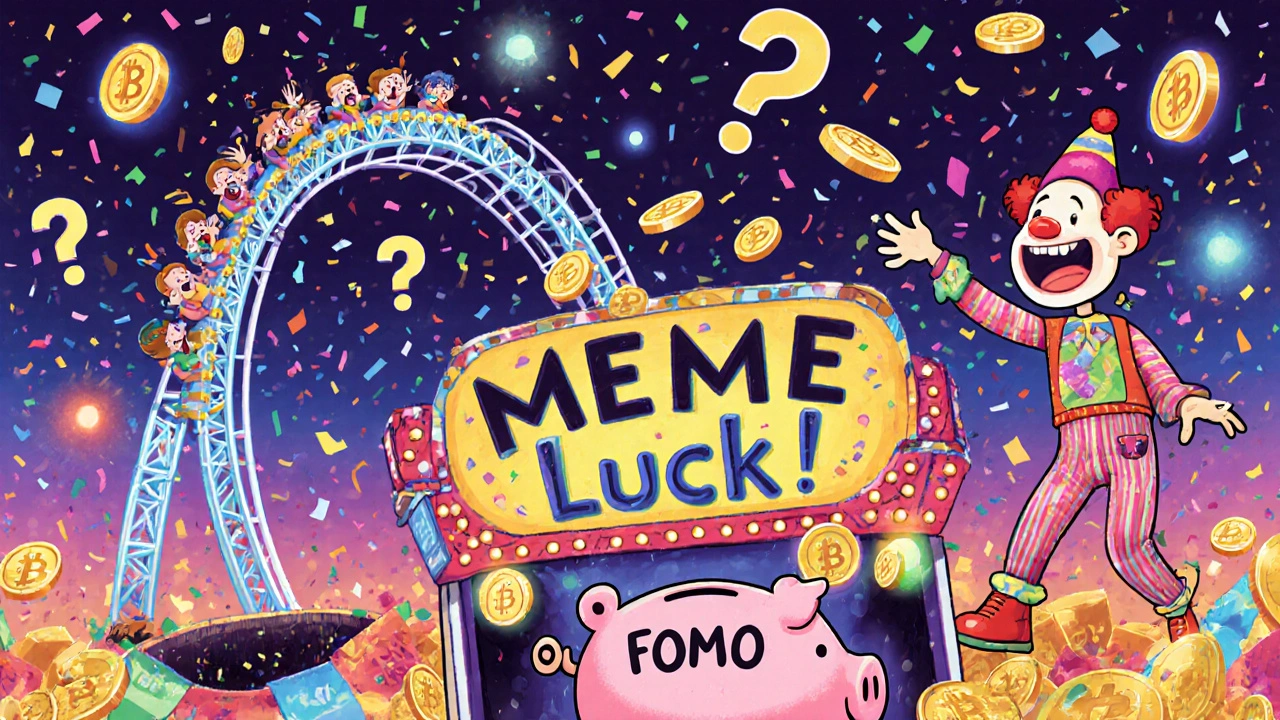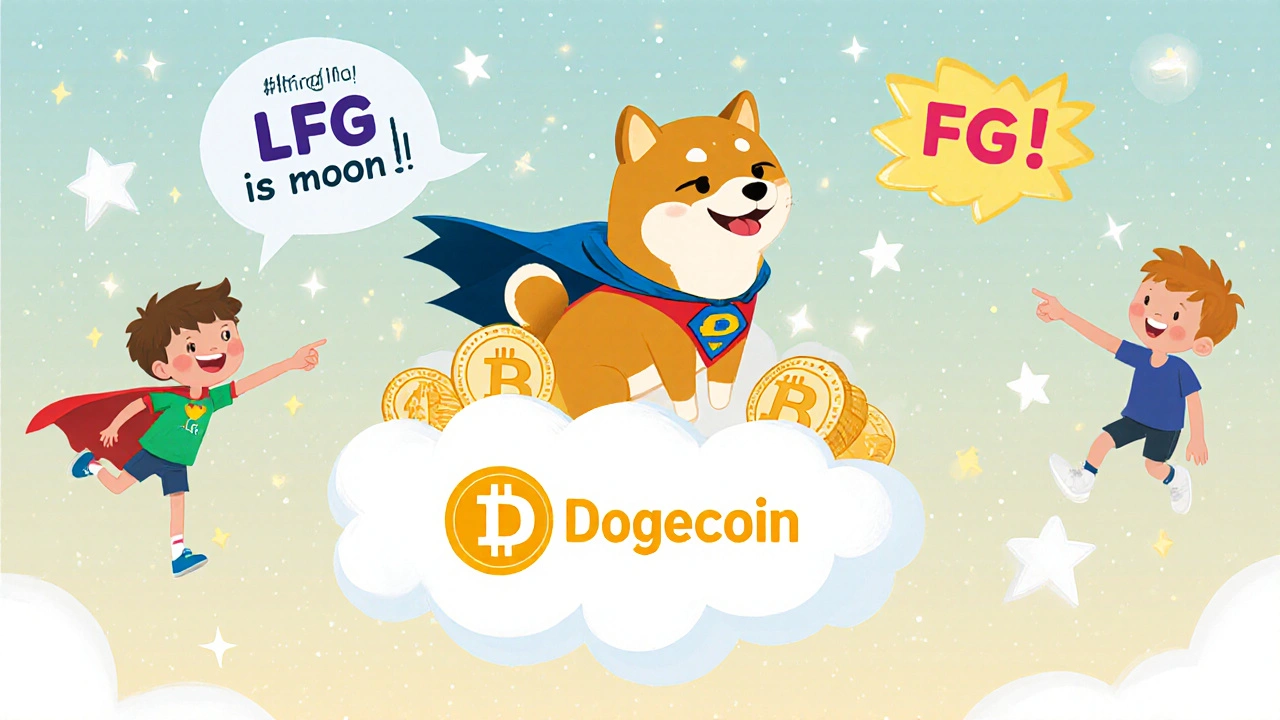Ever scrolled through Twitter and seen someone shouting about a coin called Dogecoin or Shiba Inu, claiming they made a fortune overnight? That’s a meme coin-and they’re one of the strangest, most unpredictable parts of the crypto world. Unlike Bitcoin or Ethereum, which were built to solve real problems like digital money or smart contracts, meme coins started as jokes. But jokes can turn into billion-dollar markets. So what exactly are meme coins in crypto, and why do people still trade them?
They Started as a Prank
Meme coins weren’t designed to change finance. They were made to make people laugh. Dogecoin, the original meme coin, was created in December 2013 by two software engineers, Billy Markus and Jackson Palmer. They took the popular Doge internet meme-a Shiba Inu dog with funny, broken English captions-and turned it into a cryptocurrency. The whole thing was a parody of the serious, hype-driven crypto scene at the time. They didn’t expect anyone to take it seriously. But people did.By 2014, Dogecoin had a community. By 2021, it hit a market cap of over $80 billion. Elon Musk started tweeting about it. Celebrities jumped on board. Suddenly, a coin born from a joke was being discussed on CNBC and Wall Street. That’s the power of internet culture meeting financial markets.
How Meme Coins Work (Technically)
Meme coins run on blockchains like Ethereum, Solana, or Binance Smart Chain. They’re usually built as tokens using standards like ERC-20 or SPL. That means they don’t have their own network-they ride on top of existing ones. Most meme coins have no real utility. No apps, no teams building products, no roadmaps. Their value comes from one thing: belief.Here’s how it breaks down:
- No mining: Most meme coins are pre-mined. All coins are created at launch, and the creators control the supply.
- Massive supply: Dogecoin has over 140 billion coins in circulation. Shiba Inu has one quadrillion. That sounds insane, but it keeps the price per coin low-often fractions of a cent. That tricks people into thinking they’re buying “a lot” for little money.
- No hard cap: Unlike Bitcoin’s 21 million limit, most meme coins have unlimited supply. That means inflation is built in. The more coins are printed, the less each one is worth-unless demand keeps rising.
So technically, they’re not different from other tokens. But their story? That’s where they’re wild.
Why Do People Buy Them?
If meme coins have no real use, why do millions buy them? Three reasons: FOMO, community, and the dream of getting rich fast.FOMO-fear of missing out-is huge. When Dogecoin jumped 10x in a week, people who didn’t buy felt like they’d lost a once-in-a-lifetime chance. So they jumped in, hoping to catch the next wave. It’s not investing-it’s gambling with a social twist.
Community is the real engine. Meme coin holders aren’t just investors. They’re fans. They post memes, host Discord servers, organize TikTok challenges. The Dogecoin community once raised money to send a sponsored NASCAR car to the Daytona 500. The Shiba Inu community built its own decentralized exchange and NFT collection. These aren’t projects-they’re movements.
The dream is simple: buy a few dollars’ worth, and wake up a millionaire. In 2021, a few early Shiba Inu buyers turned $500 into over $1 million. Stories like that spread fast. But here’s the catch: those people were in at the very start. For everyone else, the odds are stacked. Most meme coins crash within months. Some vanish overnight.

Biggest Meme Coins Right Now
Not all meme coins survive. Thousands have come and gone. But a few have stuck around. Here are the top three as of late 2025:| Coin | Launch Year | Market Cap (USD) | Key Feature |
|---|---|---|---|
| Dogecoin (A cryptocurrency created as a joke in 2013, now one of the most recognized digital assets) | 2013 | $15 billion | First meme coin; backed by Elon Musk |
| Shiba Inu (A Dogecoin competitor launched in 2020 with a massive token supply and a growing ecosystem) | 2020 | $8 billion | Has its own decentralized exchange (ShibaSwap) and NFTs |
| Peanut (A newer meme coin launched in early 2024 that gained traction through viral TikTok trends) | 2024 | $2.1 billion | Community-driven; no team, no roadmap |
Notice anything? No whitepapers. No CEOs. No revenue. Just names, memes, and a lot of hype.
The Risks Are Real
Meme coins are not investments. They’re speculative bets. And they come with serious risks.- Price crashes: Meme coins can drop 90% in a day. In 2023, a coin called Floki Inu lost 85% of its value in 48 hours after a key influencer stopped promoting it.
- Rug pulls: Developers can vanish with all the money. In 2024, over 1,200 meme coins were abandoned or stolen by their creators. Most never recover.
- No protection: If you lose your keys or get hacked, there’s no customer service. No bank to call. No refund.
- Regulatory risk: The SEC and other agencies are watching. In 2025, the U.S. began treating some meme coins as unregistered securities. That could mean fines, bans, or even criminal charges for promoters.
Think of it like buying a lottery ticket. You might win. But you’re more likely to lose. And you’re not just risking money-you’re risking time, emotion, and your financial discipline.

Who Should Avoid Meme Coins?
If you’re saving for a house, your kid’s education, or retirement-don’t touch meme coins. They’re not for long-term planning. They’re for people who:- Can afford to lose every dollar they put in
- Understand they’re gambling, not investing
- Enjoy the social side of crypto-memes, jokes, community
- Have already built a solid portfolio with Bitcoin, Ethereum, or other established assets
If you’re new to crypto, start with Bitcoin. Learn how wallets work. Understand blockchain basics. Then, if you still want to play with meme coins, treat it like going to a casino-set a budget, stick to it, and walk away when you’re done.
What’s Next for Meme Coins?
Meme coins aren’t going away. They’re too deeply tied to internet culture. But they’re changing. Some are adding tiny utilities now-like Shiba Inu’s staking system or Dogecoin’s integration with payment apps. Others are becoming marketing tools. Brands are launching their own meme coins to build hype.One thing’s clear: the era of pure joke coins is fading. The next wave will be meme coins with just enough structure to survive longer. But the core truth remains-their value isn’t in code. It’s in collective belief.
So if you’re wondering whether to buy one? Ask yourself: Are you buying a coin… or a feeling?
Are meme coins a good investment?
No, meme coins are not a good investment. They have no underlying value, no revenue, and no long-term roadmap. Their price moves based on hype, social media trends, and celebrity tweets-not fundamentals. Most lose value over time. Only buy if you’re okay with losing your money entirely.
Can meme coins go to zero?
Yes, and many have. Over 80% of meme coins launched since 2020 are now worthless. Some developers just delete the code and disappear with funds. Others lose community support and tank. If you’re holding a meme coin with no active development or social buzz, it’s likely already on its way to zero.
Why do people still trade meme coins if they’re so risky?
Because some people win big-and those wins get shouted loud. When someone turns $100 into $10,000, it makes headlines. But behind every winner are thousands who lost. The thrill of fast gains, the social buzz, and the fear of missing out keep people coming back-even when the odds are terrible.
Is Dogecoin still relevant in 2025?
Yes, but not because of technology. Dogecoin stays relevant because of its community and Elon Musk’s occasional tweets. It’s the only meme coin with real brand recognition. It’s accepted by some online stores, used in tipping systems, and still gets media coverage. But its price is still driven by emotion, not utility.
How do I buy a meme coin safely?
Use a trusted exchange like Binance, Coinbase, or Kraken. Never buy from random websites or Telegram links. Only invest what you can afford to lose. Double-check the token contract address-scammers create fake coins with similar names. And never share your private keys with anyone.
